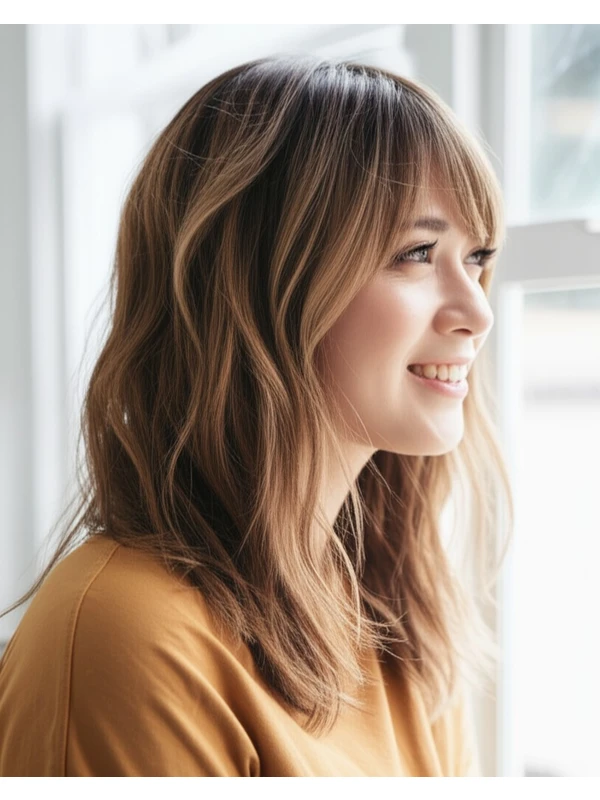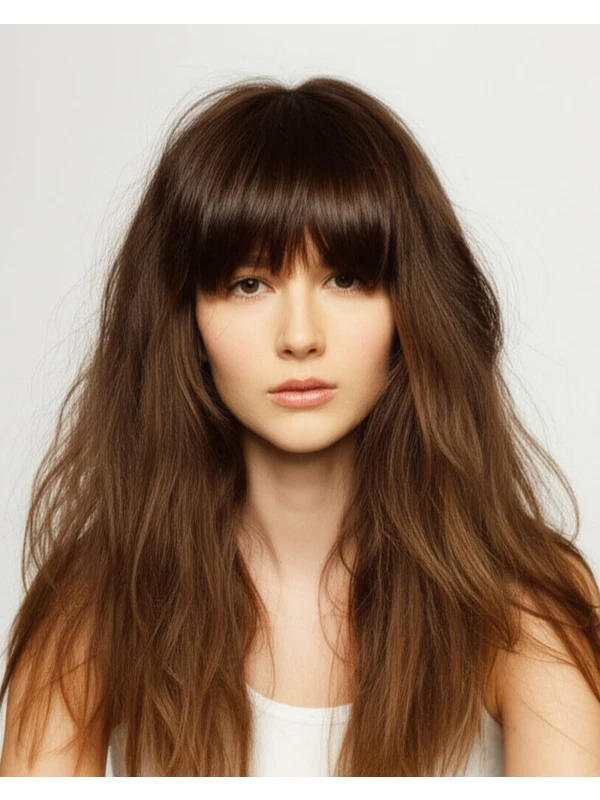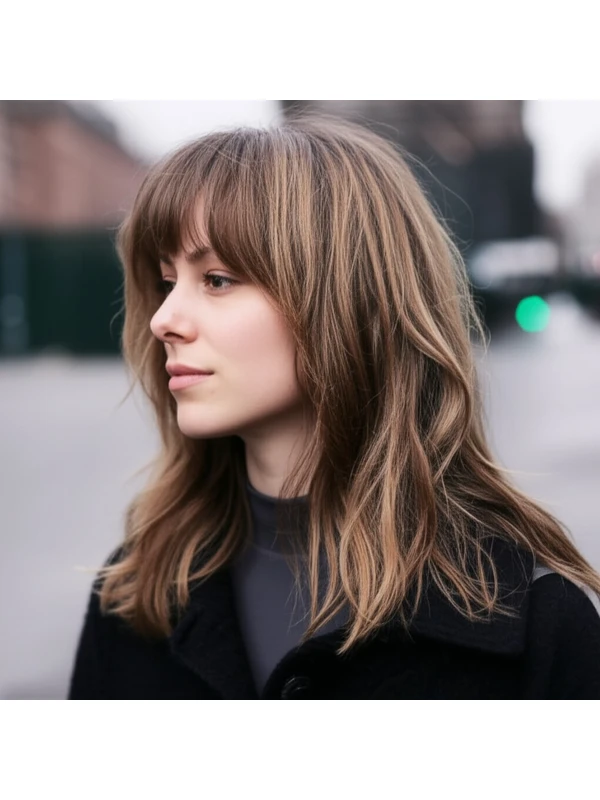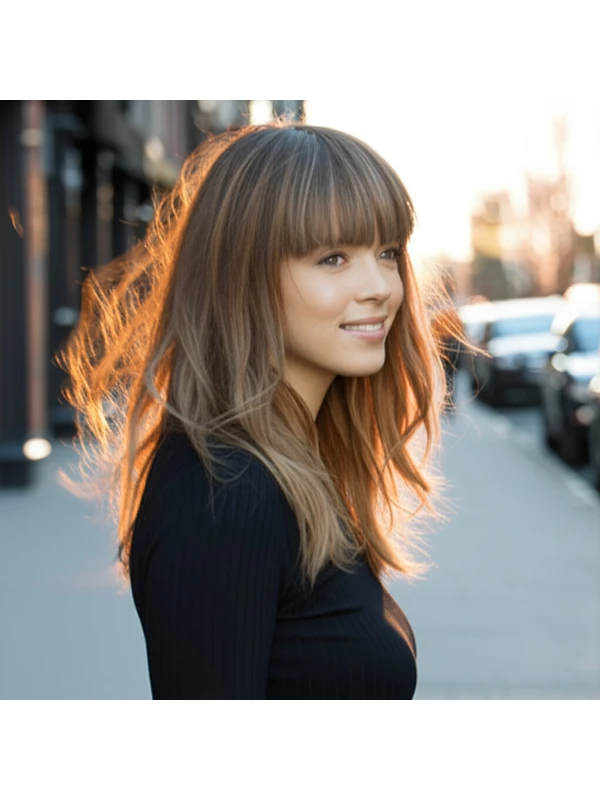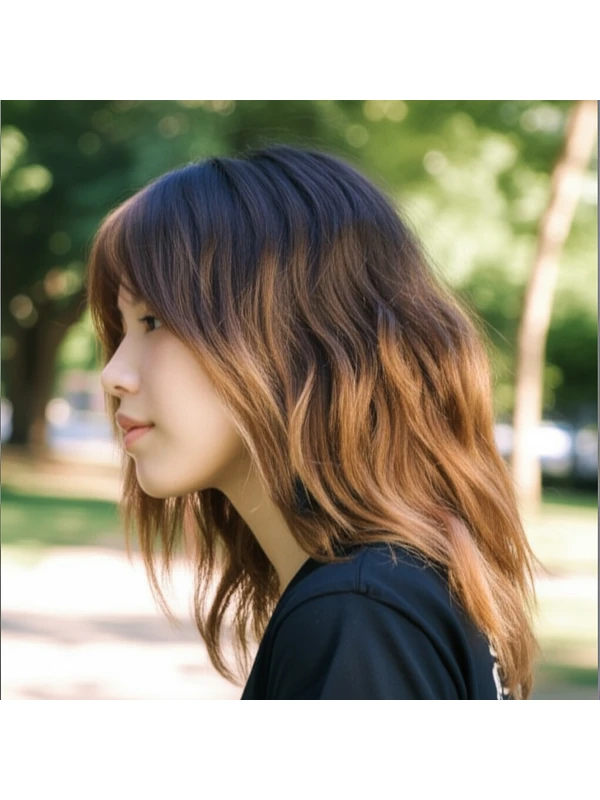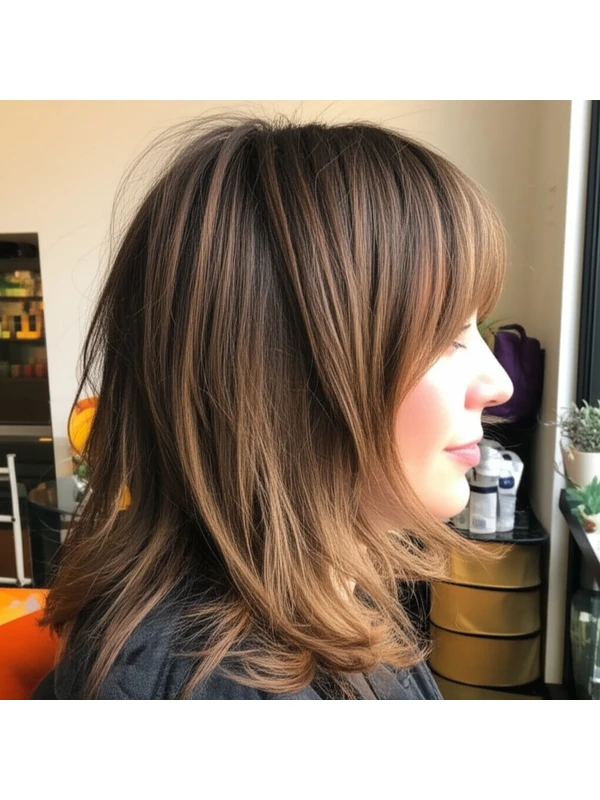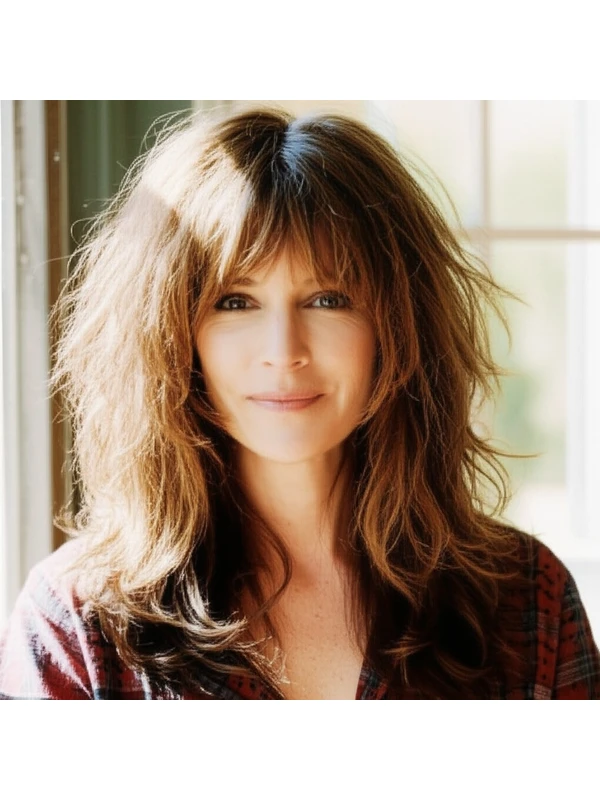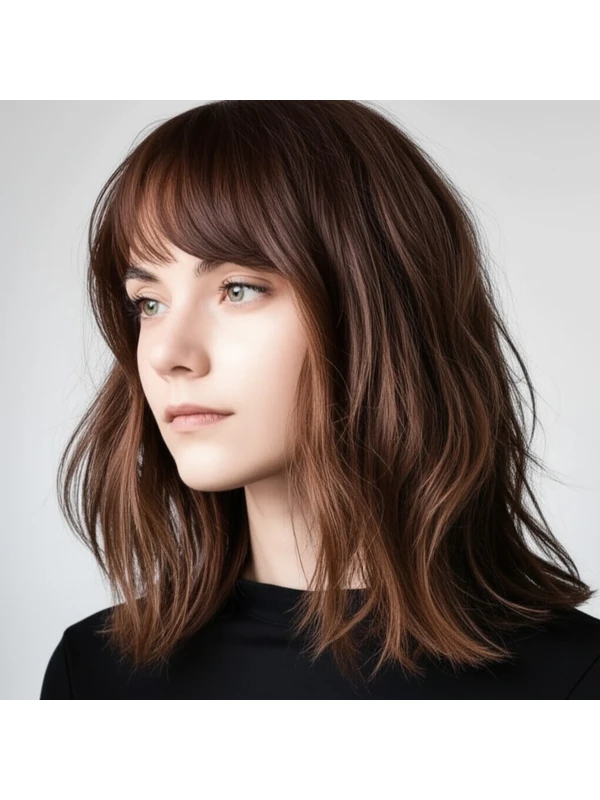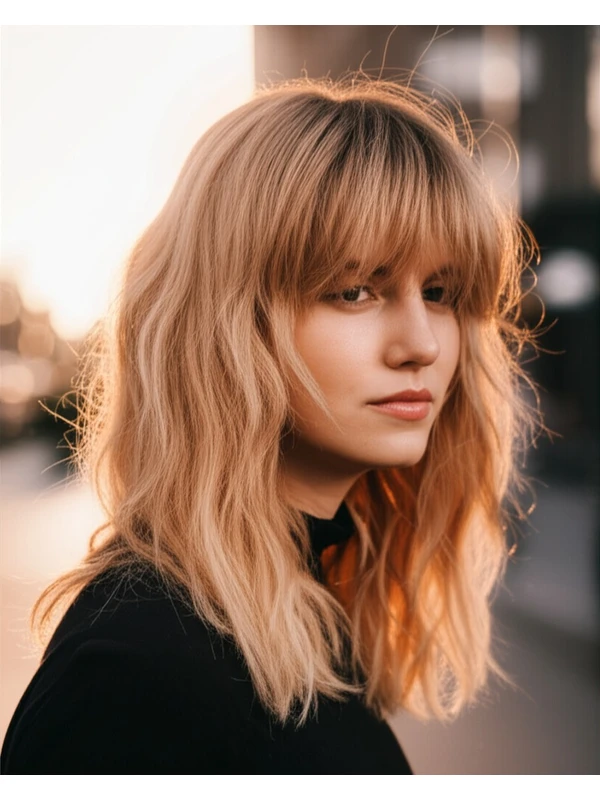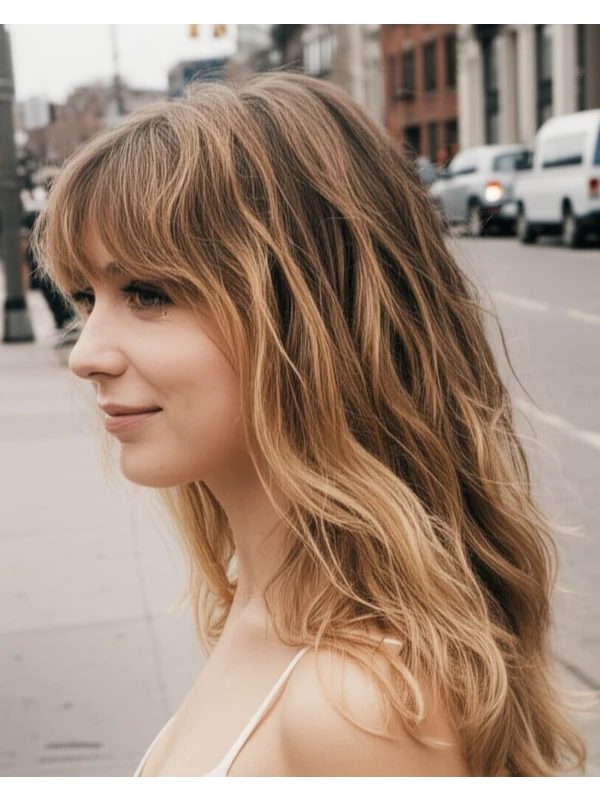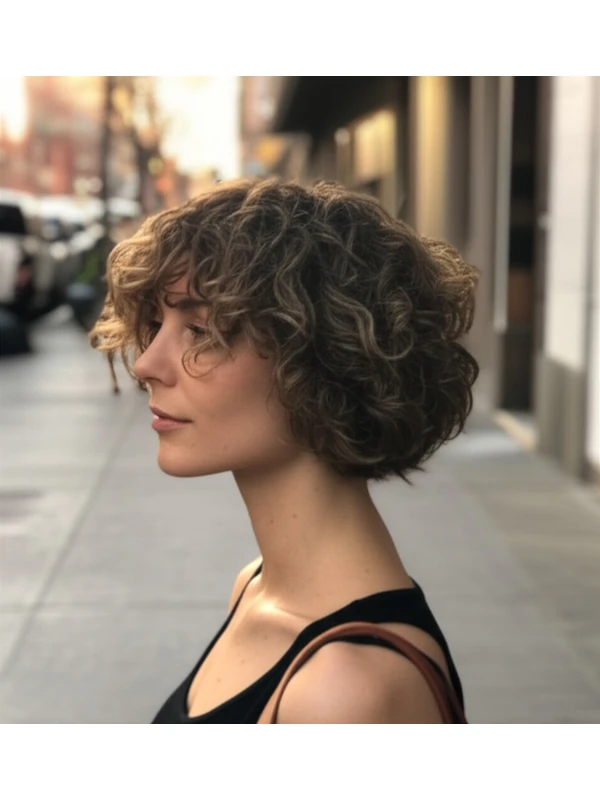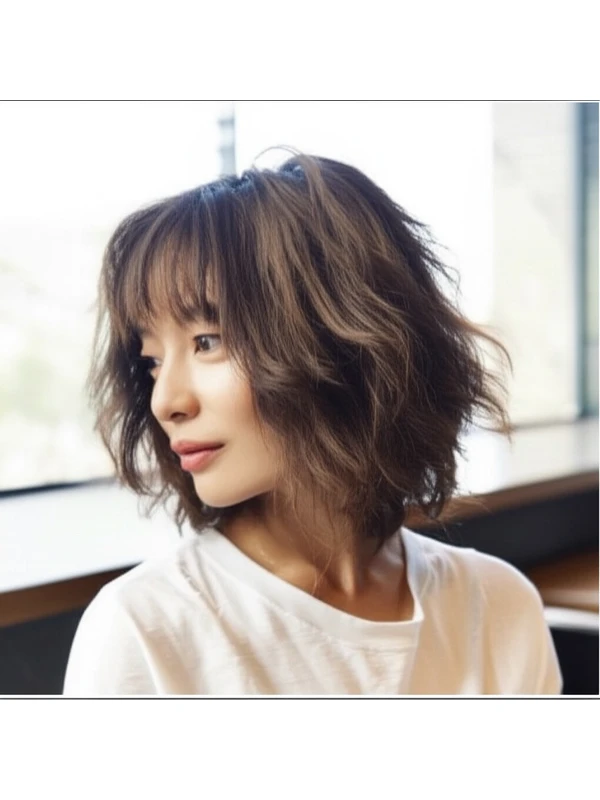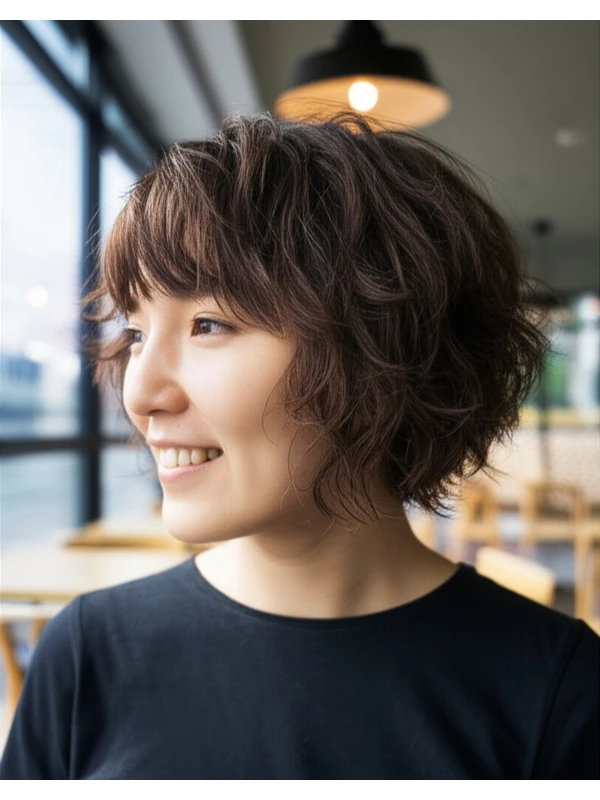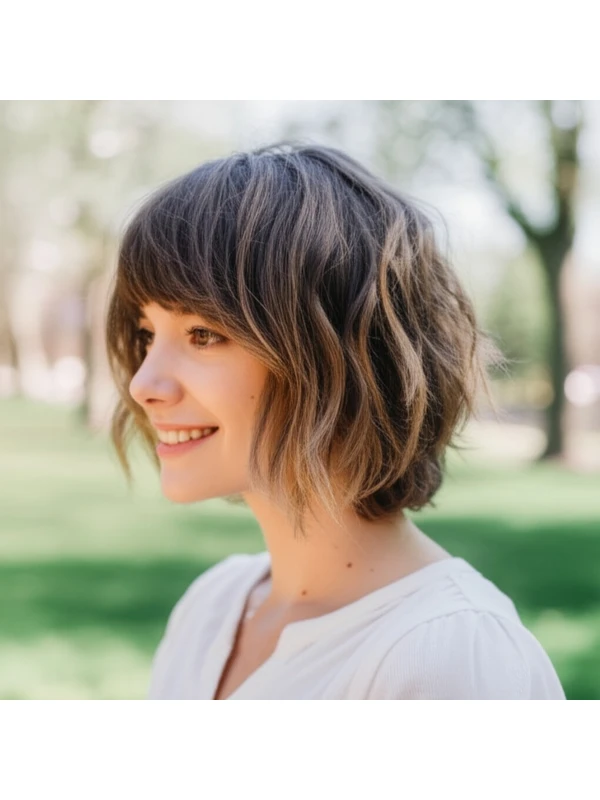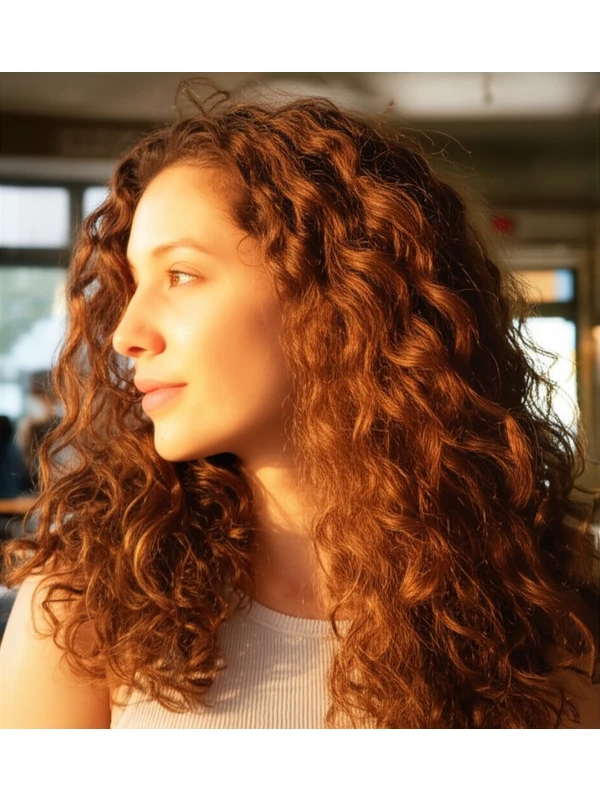#The Long Shag: Effortless Cool for Every Face & Hair Type
The long shag is back – and it’s more adaptable than ever! This isn't your mom's 70s shag; modern iterations are softer, more personalized, and incredibly flattering on a wide range of people. Let’s dive into everything you need to know about this effortlessly cool hairstyle.
#1) Background & Definition: What is a Long Shag?
The long shag (often called a "shaggy bob" or “modern shag”) is characterized by its layered construction, creating volume and movement throughout the hair. It’s not just layers; it's about how those layers are placed to create shape and texture.
Key Features:
- Heavy Layers: The defining element – these aren't subtle face-framing layers. They provide significant volume at the crown and movement throughout.
- Disconnected Undercut (Optional): Some shags incorporate a shorter, disconnected section at the nape of the neck or sides for added edge. This isn’t always present in “long” shags but is a modern variation to consider.
- Face-Framing: Layers are strategically placed around the face to soften features and highlight cheekbones.
- Texture Focus: The shag thrives on natural texture – whether it's waves, curls, or even straight hair that can be styled with texture products.
Typical Length Ranges: Generally falls between collarbone length and shoulder-blade length (around 12–20 inches). “Long” refers to the overall length; layers are shorter than the longest pieces of hair.
Alternative Names: Shaggy Bob, Modern Shag, Layered Haircut with Fringe.
#2) Face Shape Fit: Finding Your Perfect Angle
The beauty of a long shag is its adaptability. However, understanding how it interacts with your face shape will help you and your stylist achieve the best results.
- Oval: Lucky you! The shag generally flatters oval faces beautifully. A full fringe (curtain bangs are particularly chic) can add even more balance.
- Round: A long shag with longer layers that start below the chin helps elongate a round face. Avoid too much volume at the cheeks. Side-swept fringe is preferable to blunt, straight bangs.
- Square: Soften those angles! A long shag with feathered layers around the jawline and cheekbones will create a more feminine look. A wispy, textured fringe can also soften a strong brow line.
- Heart: The shag’s volume at the crown balances a wider forehead. Side-swept bangs or curtain bangs work well to draw attention downwards. Avoid overly short layers around the chin.
- Diamond: Shags with face-framing layers that blend seamlessly into longer lengths will soften diamond shapes, highlighting cheekbones and minimizing width. A fringe is optional but can add a playful touch.
- Oblong (Long): A shag with shorter layers at the sides and more volume around the cheeks helps create the illusion of width. Avoid overly long or flat styles that accentuate length further.
#3) Body Proportions & Height Guidance: Silhouette Harmony
The long shag isn’t just about your face; it impacts your overall silhouette too!
- Petite: Shorter, more layered shags (closer to collarbone length) work best for petite frames. Too much length can overwhelm a smaller stature.
- Average Height: Most lengths within the typical range will suit an average height. Consider shoulder-blade length for added drama.
- Tall: Longer versions of the shag, reaching mid-back, are ideal for taller individuals, adding visual weight and balance.
- Narrow Shoulders: Layers that create volume at the shoulders help visually broaden a narrower frame.
- Broad Shoulders: Avoid excessive layering directly over the shoulders; this can exaggerate width. Focus on layers that add height to the crown instead.
- Short/Average/Long Neck: A longer shag with face-framing layers can elongate a shorter neck, while those with long necks might opt for slightly more volume at the back to create balance.
#4) Works Best With Hair Types & Densities: Texture is Key!
The shag thrives on texture – but it can be adapted for various hair types and densities.
- Straight: A shag adds much-needed movement and dimension to straight hair. Texturizing products are essential for creating the signature "shagged" look.
- Wavy: The shag enhances natural waves, giving them more definition and bounce. Air drying or minimal heat styling is often all that's needed.
- Curly/Coily: The shag can be incredibly flattering on curls and coils! However, it’s crucial to consider shrinkage. Layers should be cut longer than your hair appears when dry. A skilled stylist who understands curly hair cutting techniques is essential.
- Shrinkage Considerations: Coils often shrink significantly (sometimes up to 50%). Communicate this clearly with your stylist; they'll need to account for it during the haircut.
- Fine Hair: Layers add volume, but too many can make fine hair look even thinner. Opt for fewer layers and focus on face-framing.
- Medium/Thick Hair: The shag shines with medium to thick hair as the layers create a beautiful balance of volume and movement.
- Density Tips: If your hair is very dense, ask your stylist about "thinning" techniques to remove some bulk while maintaining overall fullness.
#5) Styling Variations: From Casual Cool to Evening Glam
The long shag is incredibly versatile!
- Sleek vs Textured: Sleek shags are achieved with smoothing serums and a flat iron (or round brush). Textured shags embrace natural waves or crimps, enhanced by sea salt sprays.
- Middle vs Side Part: A middle part creates symmetry; a side part adds softness and asymmetry.
- Fringe Variations: Curtain bangs (longer, face-framing), wispy bangs, blunt bangs – the possibilities are endless! Consider your face shape when choosing a fringe style.
- Occasion Styling:
- Casual: Air dry with texturizing spray or mousse.
- Office: Sleeked down with serum and a polished part.
- Evening: Add waves with a curling iron, finish with hairspray for hold.
#6) Maintenance: Keeping Your Shag Sharp
- Trim Cadence: Every 6-8 weeks to maintain shape and prevent layers from blending together.
- At-Home Routine: Gentle shampoo & conditioner, leave-in conditioner (especially important for dry or curly hair).
- Heat vs Air Dry: Embrace air drying whenever possible! If using heat, always use a protectant spray.
- Product Checklist:
- Shampoo/Conditioner (suited to your hair type)
- Leave-in Conditioner (for moisture and detangling)
- Texturizing Spray or Mousse (for volume and definition)
- Finishing Serum or Oil (to tame frizz and add shine)
- Estimated Daily Styling Time: 10-30 minutes, depending on desired style.
#7) Grow-Out Roadmap: The Evolution of Your Shag
- Months 1-3: Layers are most defined; shape is at its peak. Regular trims maintain the sharp angles.
- Months 4-6: Layers start to blend together slightly. Volume may decrease a bit. A trim focuses on rebalancing the layers and removing any unwanted bulk.
- Beyond 6 Months: The shag transitions into a more blended, lived-in look. Consider adding new face-framing pieces or adjusting layer placement for continued interest.
#8) Color Pairings: Enhancing Your Shag's Dimension
- Cool Undertones (Ash Blondes, Cool Browns): Enhance the edgy vibe of the shag with icy tones.
- Warm Undertones (Golden Blondes, Warm Browns): Bring out the natural warmth and radiance of your skin.
- Low-Commitment Options: Balayage or babylights add dimension without a harsh root line; perfect for experimenting with color before committing to all-over dye.
#9) Season & Occasion Guide: Styling for Every Moment
- Spring/Summer: Embrace the air-dried, textured look! Sea salt spray and minimal styling are your best friends.
- Fall/Winter: Add warmth with richer tones and more polished styles. A sleek shag looks chic in a professional setting.
- Occasions: Weddings - soft waves & romantic fringe; Parties – bold color accents or playful accessories; Formal events- Sleek, sophisticated style with minimal texture.
#10) Cost & Time: Salon Investment
- Salon Time: Typically 1.5–3 hours, depending on hair length and complexity of the cut/color.
- Estimated Price Range: Generally falls within the mid-range price bracket for salon services (consider a range relative to your local market).
#11) Pros & Cons: The Trade-Offs
Pros: Versatile, flattering on many face shapes, adds volume and movement, relatively low maintenance with the right routine. Cons: Requires regular trims, can be time-consuming to style (depending on desired look), layers can make fine hair appear thinner if not cut correctly.
#12) Salon Consultation Script: Your Questions Answered
Use these prompts when discussing your long shag goals with your stylist!
- "I'm interested in a long shag, but I’m concerned about [specific concern – e.g., making my face look rounder/thinner]."
- “Can you show me some examples of shags that would suit my hair type and density?”
- "How much volume do you think we should create at the crown?"
- "I'm not sure about a fringe – what options would work best for my face shape?"
- "What products will I need to maintain this style at home, and how long will it take me to style each day?”
Disclaimer: This article provides general styling advice. Individual results may vary based on hair type, texture, density, and overall health. Consult with a qualified hairstylist for personalized recommendations.
